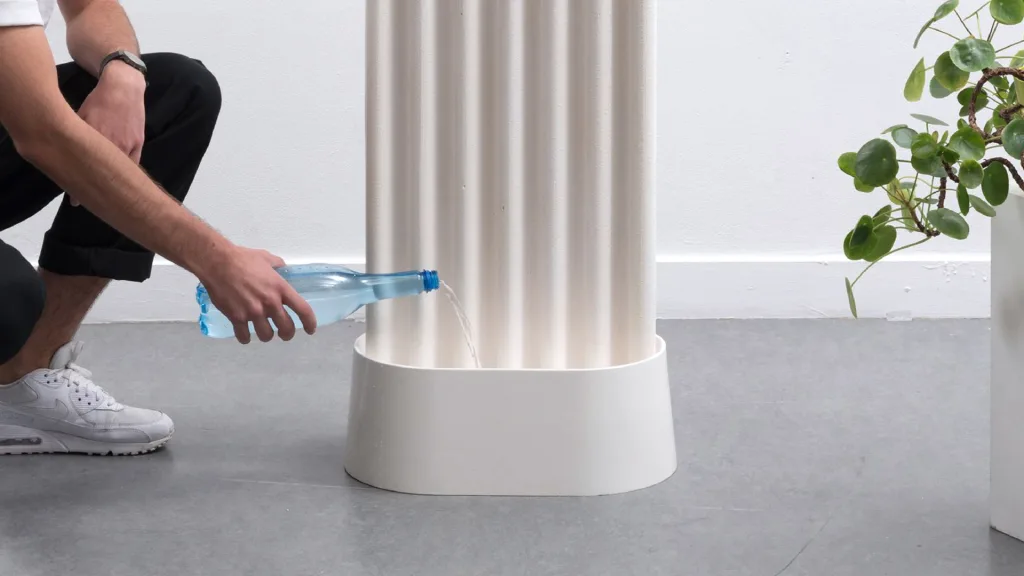While environmental awareness is undoubtedly a macro necessity, taking steps to shrink our own carbon footprints on a smaller scale is crucial too. Incorporating eco-friendly practices into homes—which are our own miniature worlds, after all—isn’t always easy, but thoughtful design can help. For instance, Paris-based industrial designer Maxime Louis-Courcier recently addressed the need for more sustainable home appliances by designing an air conditioner and air humidifier made from an unlikely collection of natural materials.
[Photos: courtesy Maxime Louis-Courcier]
Louis-Courcier’s innovative appliances eschew traditional electricity completely. His “woven air-conditioner” weighs about 22 pounds and can be hung on any wall. It’s made out of high-thermal-conductivity composite yarn that holds tubes of phase-change materials, or PCMs. These bio-based fatty acids melt at about 77 degrees Fahrenheit, absorbing heat as they liquify. That reduces the temperature in a given space—a low-tech and passive way to cool a room. The PCMs become transparent once they’ve melted, which turns the tubing blue. As the amount of heat stored in the cooling unit increases, a randomized blue pattern is gradually revealed, making this functional home appliance an artistic wall covering too. The cooler the temperature, the more solid the material, making the object a monochromatic white again.
“This simple hanging system allows you to line the wall with as many modules as necessary,” Louis-Courcier writes on his website. “While covering the wall, the object absorbs the heat in contact with the air, and creates a barrier with the heat that penetrates through the walls.”
Louis-Courcier also designed a passive humidifier made of paper clay, for particularly dry locations or artificially heated homes. The earthenware object uses capillary action to absorb water from a stand at its base. As the water moves upward and evaporates, it subtly and naturally moistens the room. The undulating ripples of its surface provide visual interest, while also increasing surface area—making the humidifier fit to service a large room with roughly one cup of water an hour.
“Most of the time, household objects are seen as a technical black box,” writes Louis-Courcier. And that, he adds, can lead to misuse. “The use of materials with singular physical characteristics will allow [us] to build sustainable and passive objects (no electricity needed).”
Recognize your brand’s excellence by applying to this year’s Brands That Matter Awards before the early-rate deadline, May 3.









